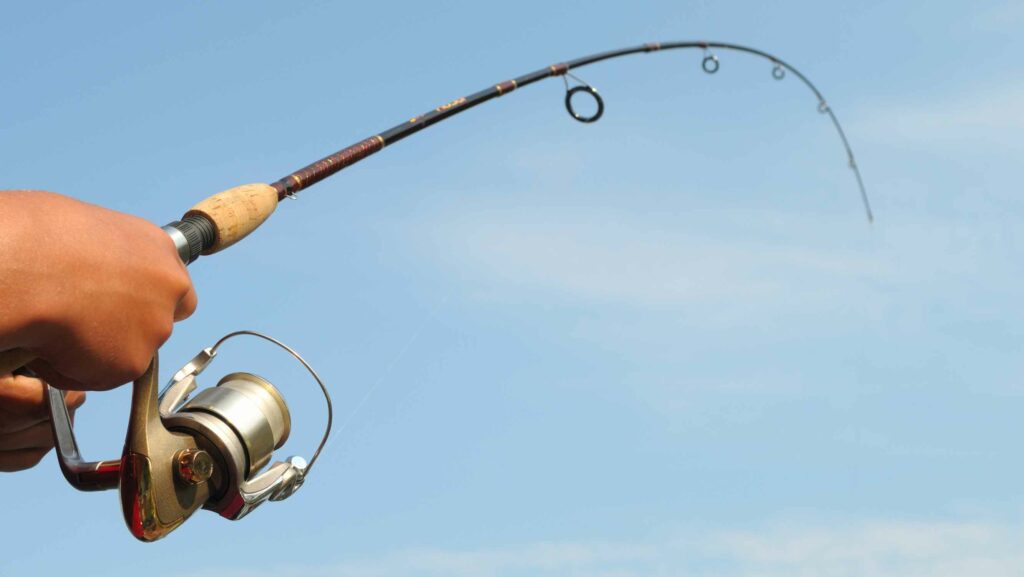For avid anglers, organizing their prized fishing rods is more than a necessity—it’s a way to honor the tools that bring them so much joy. However, not everyone has the luxury of a spacious garage or a dedicated gear room. This is where DIY fishing rod storage ideas come into play, offering creative, space-saving solutions that can be tailored to any home.
From wall-mounted racks to freestanding holders, the possibilities are endless when it comes to DIY projects that protect and display fishing rods. These storage solutions not only keep rods safe from damage but also turn them into a part of the home decor. Whether you’re a seasoned fisherman or a casual hobbyist, finding the right storage solution can enhance your fishing experience and help maintain your gear in top condition.
DIY Fishing Rod Storage Ideas
 Wall-mounted racks offer a space-efficient solution, fitting snugly against any wall. Easy to install, these racks make use of vertical space that might otherwise go unused. Anglers customize their racks by adjusting the spacing to accommodate rods of all sizes, ensuring accessibility and visibility. Materials used range from durable woods to sleek metals, blending well with a variety of decor styles. Additionally, adding a protective foam or rubber layer prevents scratches and damage to the rods.
Wall-mounted racks offer a space-efficient solution, fitting snugly against any wall. Easy to install, these racks make use of vertical space that might otherwise go unused. Anglers customize their racks by adjusting the spacing to accommodate rods of all sizes, ensuring accessibility and visibility. Materials used range from durable woods to sleek metals, blending well with a variety of decor styles. Additionally, adding a protective foam or rubber layer prevents scratches and damage to the rods.
Ceiling racks are perfect for those with limited floor space, as they utilize the area above. By mounting these racks on the ceiling, anglers keep their rods out of the way yet easily reachable. This type of storage is ideal in garages or basements where wall space might already be occupied. Like wall-mounted options, ceiling racks can be crafted from different materials and colors to match the room’s aesthetic. Installations generally require basic tools, and the racks must be firmly secured to ensure they support the weight of the rods without risk.
Freestanding Racks
Freestanding racks stand out due to their portability and versatility. These units typically consist of a base with multiple slots or pegs arranged to hold each rod separately, preventing tangling and damage. They can be placed anywhere in a room, making them an excellent choice for those who prefer movable or temporary storage solutions.
Materials Needed for DIY Projects
 To start building a DIY fishing rod storage system, collectors and enthusiasts need specific woodworking tools and supplies. Key items include a saw for cutting pieces to exact lengths, a drill for making holes necessary for screws or hooks, and sandpaper for smoothing out any rough edges on the wood. Moreover, measuring tape is essential to ensure all components fit perfectly together. Builders often use wood glue and screws for assembly, providing a durable structure. The choice of wood, such as pine or cedar, depends on the desired aesthetic and budget constraints but must be sturdy enough to hold multiple rods.
To start building a DIY fishing rod storage system, collectors and enthusiasts need specific woodworking tools and supplies. Key items include a saw for cutting pieces to exact lengths, a drill for making holes necessary for screws or hooks, and sandpaper for smoothing out any rough edges on the wood. Moreover, measuring tape is essential to ensure all components fit perfectly together. Builders often use wood glue and screws for assembly, providing a durable structure. The choice of wood, such as pine or cedar, depends on the desired aesthetic and budget constraints but must be sturdy enough to hold multiple rods.
Step-by-Step Guide to Building Fishing Rod Storage
 Identifying the appropriate dimensions for your fishing rod storage begins with determining the number of rods you intend to store and the space available. For wall-mounted racks, measure the wall space, accounting for clearance on either side to ensure rods can be easily placed and removed. Ceilings racks require height measurements, ensuring they are high enough to avoid obstructions but within reach for easy access.
Identifying the appropriate dimensions for your fishing rod storage begins with determining the number of rods you intend to store and the space available. For wall-mounted racks, measure the wall space, accounting for clearance on either side to ensure rods can be easily placed and removed. Ceilings racks require height measurements, ensuring they are high enough to avoid obstructions but within reach for easy access.
Next, sketch a layout of the rack on paper, detailing the spacing between each rod. Typically, spacing of approximately 6 inches between each rod prevents tangling and damage. Consider the length and style of your rods; longer rods or those with larger reels may require more space.
For materials, wood offers durability and aesthetic appeal but requires tools like a saw and drill for cutting and assembly. PVC is an excellent alternative, needing only PVC cutters and being more forgiving for beginners. Ensure you have all materials and tools listed before starting the project.
Once your plan is in place, cut the wood or PVC according to the measurements. If using wood, sand down any rough edges to prevent damage to the rods and ensure a smooth finish. With PVC, ensure all cuts are straight and smooth for a clean fit.

